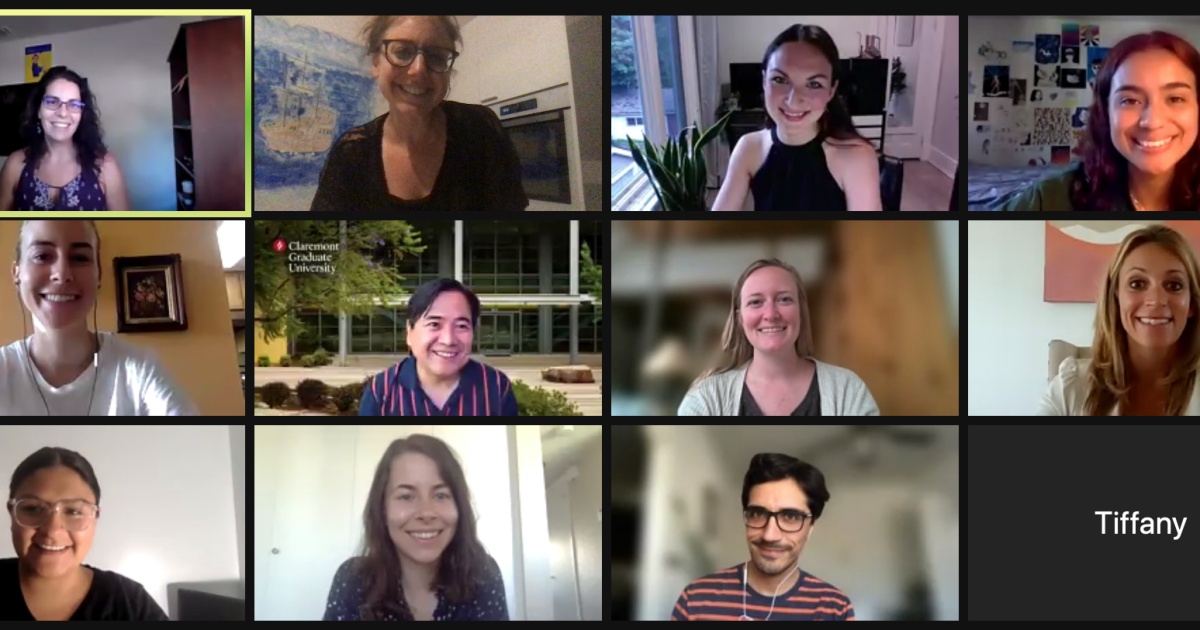How to run a feminist company — Quartz at Work

Chastened by the realities laid bare by the pandemic, a lot of companies are embracing fresh-start affirmations and promising newly enlightened, gentler, more equitable workplaces.
Let’s imagine we can take these pledges at face value. Perhaps leaders are finally tired of the dominant workplace model, what sociologists call “masculinity contest culture,” which rewards extreme confidence, the stamina to work long hours, dog-eat-dog competition, and the prioritization of work above all else, including family and friends. Or perhaps that they at least see that this type of culture is tiring other people out, even driving them to quit at record numbers.
If so, this could be an opening for a move in the exact opposite direction, toward a more relational culture. That’s how M. Gloria González-Morales, an organizational psychologist at Claremont Graduate University, describes her preferred framework when she is speaking to an audience of corporate executives. What she actually means, and often feels she can’t say in such environments, is that it’s time for feminism to become the leading organizing principle within companies.
What is a feminist workplace?
González-Morales founded and leads Claremont’s Worker Wellbeing Lab, a feminist research group studying worker health, flourishing, and belonging. For some, the “feminist” label might be confusing. To be clear, the lab’s work is not about fighting specifically for women’s rights. Nor would the lab limit its membership according to gender. Although the lab is led by a feminist, that also isn’t what makes it a feminist organization.
Being a feminist lab means drawing on feminist philosophy (or one strain of feminism) and infusing everything you do with its inclusive values. It’s about building consensus and putting relationships and social capital first, González-Morales explains. And it’s about supporting every member’s wellbeing and professional development, she adds, which is an appropriate approach considering the lab’s focus on positive organizational psychology and occupational health.
The lab’s members explicitly reject patriarchal systems. They discourage a zero-sum mindset and strict workplace hierarchies. In other words, in contrast to the outside-in pressure of movements like #MeToo, they are forging an inside-out strategy for resisting patriarchal work culture—and their research seeks ways to encourage others to do the same. The ultimate goal, according to the lab’s website, is to smash “the heteropatriarchy, racism, social inequality and xenophobia in organizations.”
Okay, but that’s a college campus, a skeptical reader might point out. Adopting a feminist organizational philosophy may not sound viable or realistic for offices and groups outside of academia.
Think again.
An alternative model for mainstream work cultures
González-Morales argues that people have noticed how the problems caused by masculinity contest culture are adding up. See environmental destruction and climate change. See worsening income inequality and health outcomes, particularly for people of color, by-products of the way patriarchal systems perpetuate existing power structures. “The Covid-19 crisis has made all of this more salient,” she says. At an organizational level, hyper-competitive firms and once towering icons of capitalistic hustle appear to be struggling. On an individual level, burnout and anxiety are surging. So, she says, “let’s go back to other ways of relating to each other, and ways that have worked.”
Some scholars believe there’s a greater appetite for alternatives than many people appreciate. Writing in the Journal of Social Issues in 2018, Harvard Business School professor Robin Ely and Michael Kimmel, a former Stony Brook University sociologist, cite research suggesting people who object to standard bro-ish behaviors of masculinity contest cultures “believe they cannot challenge the cultural norms that permit such behaviors because they assume no one else finds them problematic.”
While there may be pent-up demand for anti-patriarchal organizations, however, there is no single prescription for creating one. Companies must do their own analysis and reflection, looking at the effects of their culture and expectations on their employees, and how they may be nudging people to fight for dominance, says González-Morales. That said, below are eight examples of feminist lab norms that could be adopted in any organization.
1. Elevate everyone, not a few star employees
The Worker Wellbeing Lab is inclusive to a degree that’s uncommon in conventional labs. For example, when I connected with González-Morales to interview her for another story, I was delighted to be greeted by five faces on my Zoom screen instead of just the professor. Typically journalists interview the lead author on a study, not the entire team.
Sharing opportunities is one hallmark of a feminist workspace, González-Morales explains. Fittingly, when the press calls, there’s no question about who will respond: every person who had a hand in the final product will be invited to take part in the interview.
Including students who work in the lab is also a way of crediting them for their efforts. In fact, says Claremont graduate student Alyssa Birnbaum, González-Morales breaks with convention and always puts her own name last on a paper (usually the lead author is listed first). The professor says she doesn’t need the recognition, Birnbaum explains, adding, “Even though you could argue that in academia you always need to get ahead, that’s not really her purpose. Her purpose is more to develop us.”
2. Respect the virtue and value in all forms of work
González-Morales is not merely performing feminism or being generous by inviting her team to a call with a journalist interested in learning more about a particular study. The practice stems more from her general worldview which says all kinds of work, including that which has been traditionally feminized or considered “grunt work,” is worthy and dignified.
In other labs, undergraduates are often assigned tasks “that are very basic and not illuminating of anything new or publication-worthy,” González-Morales says. Often they’re not even told how the work they’re doing connects to a more meaningful goal. And their names are customarily left off the list of authors on an academic paper because they didn’t make an “intellectual contribution.”
“A feminist lab flips that idea, saying, ‘Well, if you don’t do that task, the research cannot be done,’” says González-Morales. “So let’s discuss, from the beginning, what kind of tasks are valued in our lab and why they are important. What does it mean in terms of contributions, authorship, and the use of the labor of others to work on our own research?”
Assigning someone to handle menial tasks—photocopying, coffee-fetching, filing, or sorting—might be seen as degrading in other spaces, says González-Morales, because “it says ‘you don’t have enough competencies for doing things like more complex math, for example.’” But through the feminist lens, all tasks are seen as essential.
At the CLEAR lab for environmental marine research at the Memorial University of Newfoundland, a feminist anti-colonial lab, many researchers are tasked with cleaning the space together, and everyone who scrubs and dusts is acknowledged in finished reports. Again, to director Max Liboiron, an associate professor of geography at the school, this is the only logical thing to do when equity is the lab’s primary goal and the stated mission statement is to “change science and research from its colonial, macho, and elitist norms.”
Alex Stead
“We study plastic pollution and plastic is a major component of dust. When dust gets into our samples, our science is screwed,” Liboiron says, “so just regular cleaning, literally dusting, makes our science valid.”
“It also can’t be crappy dusting,” they add, and “most dudes have not been taught how to [clean].”
Because janitors at the university have to remove their fleece jackets before entering the lab, they too appear in study credits. “They end up having to be part of the process, otherwise they’ll contaminate samples,” Liboiron says, “so it ends up being really clear what kind of collective endeavor this is when everyone from the janitors to the undergraduates who are really good at dusting make or break your science.”
3. Give people the option to say “No”
Tennis player Naomi Osaka recently made waves by saying no to press conferences at the 2021 French Open in an effort to protect her mental health. She later quit the tournament, overwhelmed by the response to her refusal to do media. She had chosen her mental stability over a potential championship title, and although she had her defenders, others questioned her drive, and her loyalty to the sport as a business.
Most companies also do not appreciate employees who set strong boundaries for themselves. They prefer the types “who say yes to everything and are always overloaded,” González-Morales says. At her lab, one measure meant to guard against overwork is codified in the group’s stated principles: “We value flexibility and commitment. We support each other when we say ‘yes’, and more importantly when we have to say ‘no.’”
Instead of demonstrating loyalty by saying “yes,” lab members are asked to show their dedication by being discerning: González-Morales asks that people only agree to work for which they can be held accountable. But this requires transparency in both directions, and so time commitments are discussed in full before any project begins.
Birnbaum, who is studying burnout and remote work as she works toward a PhD, says she and other students in the lab nonetheless struggle to say no. “I don’t think it’s because we feel like we have to say yes because otherwise we’ll be punished,” she says, “but a lot of us have that mentality where we love research and we love learning, so it’s hard to say no.”
4. Be extremely flexible
Just as the option to decline work is respected, so too are people’s schedules and obligations. In most offices, meetings are assigned to a given hour on the same day, every week, and management expects people to move their lives around to attend those gatherings or risk being seen as less engaged and dedicated. In the Worker Wellbeing Lab, by contrast, the members meet every other week, always at a different time. Because there is no single hour that works easily for everyone, each meeting is arranged to accommodate as many people as possible. A recording is made available for anyone who can’t attend. For the lab’s “happy hour” sessions, where the only goal is to check in with the group, attendance is entirely optional.
In short, “there’s a lot of intentional investment of time and relational energy to maintain that kind of [supportive] culture” says González-Morales. She makes that investment because she believes building social capital within the team is the most important part of her job. Were she to be less attentive or less flexible, she says, it’d be too easy for one person—perhaps someone with caregiving responsibilities—to start drifting and feel disconnected, especially when working from home.
5. Share all currency, including professional contacts
As the director of the lab, González-Morales also demonstrates her regard for the team, and her personal investment in their individual career goals, by being generous with her professional network, a currency that may be hoarded in other settings.
Before the pandemic, she was deliberate about introducing visiting academics to the lab members. Over the past year, she has replicated that habit by setting up a waiting room in her Zoom account so that if she’s having a meeting with a colleague in Australia, or Lisbon, and one of the lab members pops into the waiting room ahead of the next meeting, she can easily invite the student into her conversation for an introduction and a quick chat, just as if they had been waiting outside her office. “I think about all the things that you do with your team, to help create those connections that show that you care for them,” she says.
Her effort to stamp out remnants of patriarchal culture extends to her thoughts and speech. She always tries to say “the students who work in my lab,” instead of “my students,” and uses other forms of low-distance language to avoid creating hierarchy between herself and others. This takes a lot of energy, she notes, especially for a native Spanish speaker who is already putting mental effort into a second language, like she is.
6. Understand when it’s better to facilitate than lead
Between the fluid and carefully curated meetings, the hang-outs, the modifying of language, the dusting, and the consensus-building, an outsider might wonder how any work gets done in a feminist work setting. Hierarchies are generally seen as more efficient. CLEAR’s Liboiron admits the way they work “does take time.” But, they note, “we are wildly productive.”
“A lot of what I do is about facilitation, not leadership,” Liboiron says. “A facilitator puts everyone’s skills and values and ideas on the table and greases the wheels, while a leader walks in front and people support them from behind.” The former takes more time, they say, “but because everyone’s knowledge and values are on the table, they’re way more invested, you get much richer products.”
7. Be prepared to make executive decisions when it’s necessary
Building social capital through practices that are equitable by default allows the group to work quickly during a crisis, and for many of the same reasons. “[A]t some point, something comes through and it’s like, ‘People we have to work on this,’” González-Morales says, audibly bringing a fist down on her desk. “That’s when you use your social capital to say, ‘Trust me, we have to do this like this, and this is how it’s going to go.’”
By this time, if you’ve laid the groundwork, you’ll find that people trust your decisions and know they can count on you to explain the purpose of their role. Not only is this better than the way most organizations currently function, González-Morales says; in an emergency, she argues, it’s the only system that works.
8. Honor equity and all identities
CEOs often claim they want to hear employees’ voices; in practice, they’re likely to try to quell dissent—and might even offer staffers an exit if they insist on disagreeing. Perhaps they pay lip service to the idea that people should bring their whole selves to work, but with an unspoken addendum: “And then become the worker we expect you to be once you get here.”
The feminist framework, however, recognizes that the values attached to our identities are embedded in all forms of work (despite what some leaders of supposedly apolitical workplaces might claim). González-Morales wants the people in her lab to feel good about not only the product of their research, but how it’s produced and the effect it has on others. The lab’s feminism is focused on intersectionality and social justice. “For sure, we’re trying not to be white feminists,” says González-Morales.
Liboiron echoes this view, explaining that the feminism practiced at the CLEAR lab is about “attention to accountability to different groups who are differently oppressed or privileged,” including “people who get forced out of the STEM pipeline.” The lab takes knowledge that can get delegitimized in other STEM spaces—lived experiences, emotional intelligence, indigenous knowledge—”as seriously as our science.”
“That means the project you do, and the research partners you have, and the research questions you ask will be fundamentally different,” Liboiron says.
Dave Howell
Social capital will become the only differentiator
If it turns out that this isn’t quite the moment for feminism to inform organizational change, González-Morales believes that day is coming. Not only have employees made it clear that they will leverage their power to force companies to become fairer, more compassionate, more community-minded citizens, but technology is speeding ahead to rebuild the future of work. Between the acceleration of automation and AI, “[i]t’s the human factor that’s going to make a difference to organizations,” she says, “because every single organization is going to have access to the same technology.”
When she speaks to corporations, González-Morales frames workers’ mental and physical health as necessary to a company’s survival, and relational strategies as necessary to set the conditions for wellbeing. She calls out toxic, oppressive office cultures where profits are the only metric. “We know that you’re successful with your financial capital, but what about the social capital of the organization, how people network, how people trust each other?” she would ask the crowd. “Do you see people competing for promotions all the time and not [doing] enough teamwork?”
Painting a picture of an alternative world, she pays careful attention to her diction. Gender may never even come up.
“I’m not going to talk about feminism with a bunch of male executives,” González-Morales jokes. “That’s not going to work.”





